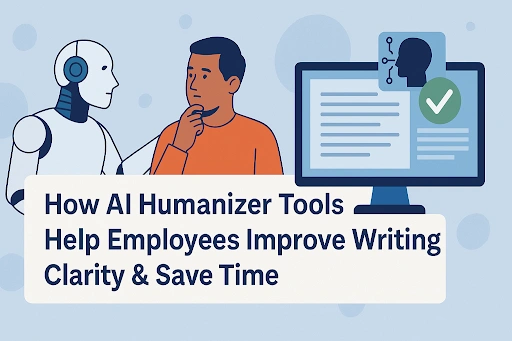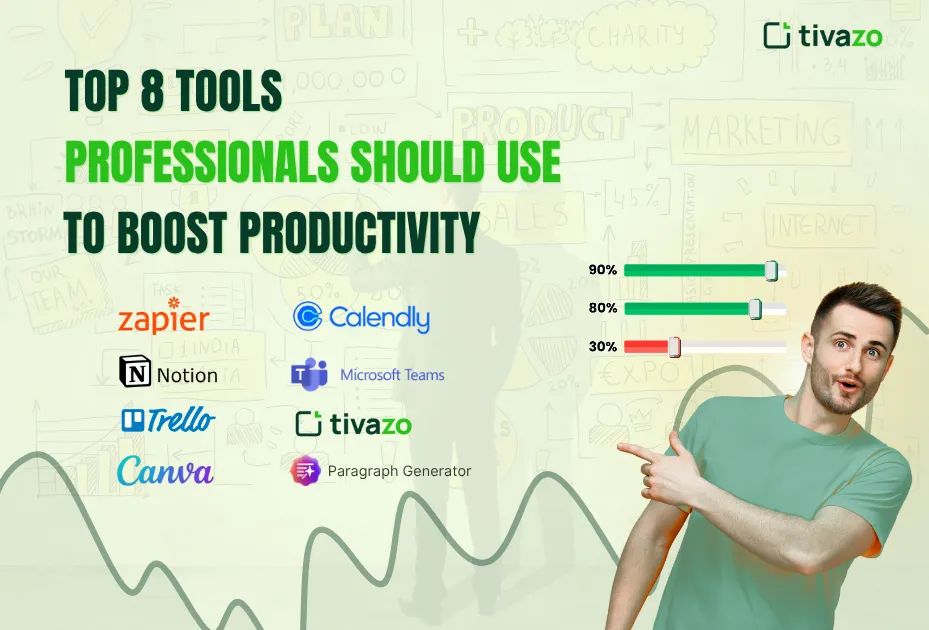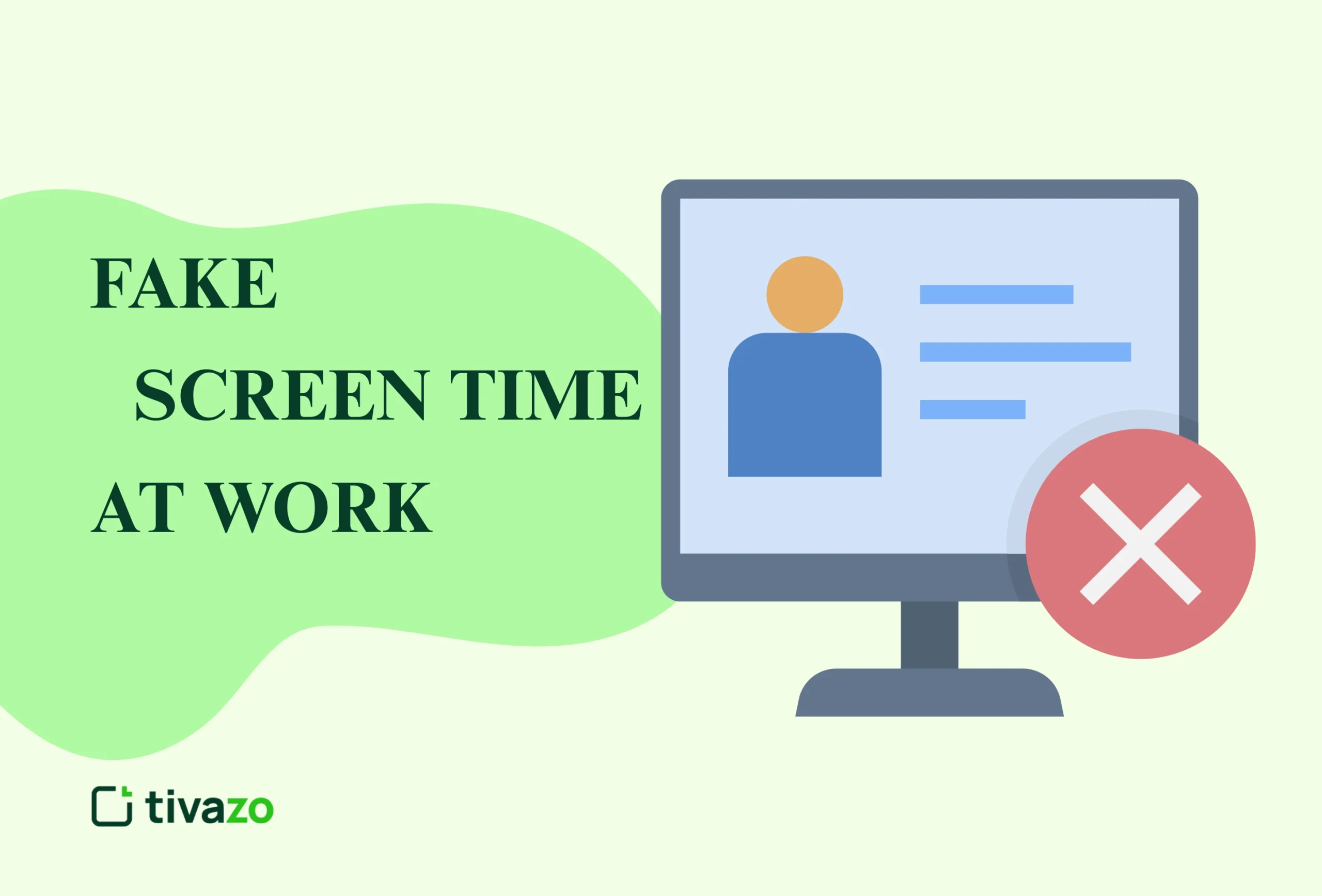Starting a new job can be both exhilarating and overwhelming for new employees at the same time. Each new employee feels the weight of initial paperwork, company policies, and expectations without clear direction on what they are supposed to do in their first several weeks. The chaos and lack of structure makes for a frustrating onboarding experience. A recent research shows that nearly 20 percent of new hires leave in their first 45 days. Not only is replacing just one employee potentially 50%-200% of their annual salary, that’s a huge loss for any organization.
There is a better way to approach this challenge – employee onboarding LMS software is revolutionizing how companies onboard and train employees across industries. It replaces disorganized, manual processes with streamlined digital systems allowing employees to take part in a personalized onboarding process that is organized and engaging. Rather than a frantic and chaotic onboarding experience, employees have a structured onboarding path that provides clarity and confidence from hour one. Organizations want to make sure their new employees feel engaged, supported and equipped to succeed to help increase employee retention, reduce time before employees productivity increases and create a positive first impression of the organization and culture.
Key Takeaways:
- Why Traditional Onboarding Falls Short
- What is Employee Onboarding LMS Software?
- Essential Features of Employee Onboarding LMS Software
- Implementation Best Practices
- Measuring Success and ROI
- Continuous Improvement Strategies
- Future Trends in Employee Onboarding LMS Software
- Choosing the Right Solution
- Conclusion
Why Traditional Onboarding Falls Short

While there have been many improvements around workplace technology over the last decade, many organizations still practice the old model of onboarding that is simply outdated to meet the complexity, pace of work, and needs of people today. Traditional onboarding (processes) do not typically include structure, consistency, or personalization–all things that contribute to feeling supported and confident in a new role; here is what typically goes wrong:
Common Onboarding Problems
- Overloaded with information: In the first few days, new hires are frequently overwhelmed with an absurd amount of information that is impossible to properly absorb and retain in any meaningful fashion.
- Inconsistent messaging: Without a centralized database, different managers are likely giving conflicting instructions or expectations.
- Paper-heavy processes: The use of forms, paperhandbooks, and filing systems slow things down substantially and add additional administrative headaches.
- Generic content delivery: The same onboarding content for all positions – whether you are a developer or a sales rep, the onboarding is the same.
- Lack of tracking and feedback: HR teams cannot track engagement, completion, or performance and have little insight into how productive (or unproductive) the onboarding truly is.
The Cost of Poor Onboarding
The cost of poor onboarding is significant and potentially debilitating. According to research, an inability to effectively onboard employees can lead to a decrease in retention rates of 82%, and a 70% drop in productivity. To put it bluntly, it costs on average $15,000 to replace a single employee–58% of organizations have improved their onboarding, but they still have a long ways to go.
This is why employee onboarding LMS software has become a requirement and not a luxury. Employee onboarding LMS software gives organizations the ability to go digital and eliminates variation in the onboarding process. Learning management software also takes away time-consuming manual tasks, and ensures new employees get the right information at the right time. Organizations will also be able to track follow through and customize content for each new hire, ultimately making onboarding much more seamless and enjoyable for employees and organizations.
What is Employee Onboarding LMS Software?

Onboarding LMS software is created learning management systems specifically for onboarding. Unlike generic training platforms, onboarding LMS software anticipates the unique requirements of employees in the first 90 days of employment throughout making onboarding valuable time of support, clarity, and structure.
Onboarding LMS software is not a one-time checklist. It utilizes the onboarding principles to create a more guided and engaging onboarding experience for all employees. Onboarding LMS software walks and holds new employees accountable for checking off all onboarding tasks, learning company policies, acquiring role-specific training, all in one location.
Key Characteristics
- Purpose-Built for Onboarding
Employee onboarding LMS software is intended for onboarding and develops an onboarding journey for the New Hire by performing essential administrative tasks like paperwork and offering role-specific training content previously set up by HR/Talent on behalf of the New Hire.
- Automation-Focused
Employee onboarding LMS software schedules many repetitive activities of reminding, assigning courses, and tracking course completion and hence HR personnel can spend time on meaningful engagement with people versus paperwork completion; and can focus on people instead of paperwork.
- Integration-Ready
The onboarding software of today is built to integrate with other employee-based tools such as HRIS, Payroll, and communication systems making onboarding easier, more uniform, and less stressful for everyone.
Essential Features of Employee Onboarding LMS Software

For a seamless employee onboarding experience with a great first impression, the best employee onboarding LMS software has features that streamline processes, customize learning and increase engagement. Here’s what to seek for:
1. Automated Workflow Management
The best employee onboarding LMS Software supports workflow management that take away all manual processes.
- Automatic enrollment means all new hires will be automatically added to their relevant learning paths.
- Reminders to send notifications and reminders when it’s time to complete an item.
- Task assignments manage the distribution of forms, policies and other training materials.
- Progress monitoring lets HR monitor reports for completion and acceptance.
- Escalation alerts ensure the team is notified when deadlines are exceeded or bottlenecks occur.
2. Personalized Learning Paths
In today’s workplace, it is inadequate to have a cookie-cutter approach to training. Well designed employee onboarding LMS Software has the capacity to customize onboarding.
- Content can be customized on the basis of job title, department and experience levels.
- Location based customization means that onboarding can reflect the differences across provinces/or regions.
- Additionally, skills assessment can provide a customized learning path to ensure that every hire receives exactly what they require.
3. Engaging Content Formats
Today’s employees want anything they touch to be interactive.
Employee onboarding LMS software includes:
- Video introductions and welcome messages from leadership.
- Interactive modules that require user engagement for retention purposes.
- Gamification elements such as badges and leaderboards to encourage employees to participate.
- Virtual reality experiences so employees can explore their surroundings on Day 1.
- Fully mobile responsive design so the learner can learn when and where they want.
4. Comprehensive Progress Tracking
Tracking progress is crucial in order to improve onboarding quality.
With employee onboarding LMS software, HR team can access:
- Dashboards that track real-time completion rates.
- Measures of engagement analytics available to provide user behavior insight.
- Assessment scores available as a means of knowledge retention.
- Feedback tools to seek new hire input.
- Metrics which can demonstrate ROI from onboarding.
5. Social Learning Features
Connecting is a vital part of the onboarding experience.
Employee onboarding LMS software includes:
- Forums to facilitate questions posed by new hires and interactions.
- Mentorship matching new hires with experienced employees.
- Team collaboration tools between new hires to support group learning.
- Subject matter expert directory to facilitate access to organizational knowledge experts directly.
- Departmental (or office) success stories that inspire connections to other team members.
Implementation Best Practices
Phase 1: Planning and Preparation
Before you implement employee onboarding LMS software, you will need to evaluate your current onboarding process. Start by documenting any and all current onboarding workflows to see how the company is onboarding their new employees.
Documenting the whole process will help you to document the steps new hires follow; this could include anything from recruiting to getting the new hire to productivity. In every onboarding stage, are there delays in training? Are the expectations in training clear? Is there inconsistent communication? Pain points in processes are usually the areas that will draw attention to where improvements are needed. Investigate with some former new hires, too; they often can provide great perspectives on what worked or what did not work. Also take time to calculate the costs to the company associated with onboarding. Also take time to consider your time investment in onboarding.
The financial and operational information you collect will provide you with a baseline you can use to measure the effectiveness of your onboarding process once the LMS has been implemented. Last, determine the success metrics and KPIs you will use to assess the onboarding LMS once implemented.
To ensure smooth deployment and adoption, engage all relevant stakeholders early in the planning process:
- HR leadership to consider strategic alignment.
- IT teams to ensure appropriate technical integration are adhered to.
- Department managers to review content and agreement.
- Former new hires to discuss their UX experiences.
- Executive sponsors for the appropriate budget and resources.
Phase 2: Content Development
To effectively implement an employee onboarding LMS software program you are going to need engaging high quality content. It’s best to begin with a content audit to see what content you currently have. Then move into turning your content into digital formats that are engaging, accessible, and specific to, and about, the many roles within your organization.
- Company culture and values: Embedded videos (where possible), videos, interactive presentations
- Policies and procedures: Mobile-friendly readable and searchable content
- Role-specific training: Specific content for each role
- Compliance: Trackable modules with assessments
- Benefits: Information that is explanatory and has decision-making support tools
You also want to make sure this content is trustworthy and easy to use. Be sure to implement a strong quality assurance plan, including:
- Subject Matter Expert review
- Legal compliance review
- Accessibility compliance check
- Mobile compatibility check
- User experience check
Phase 3: Technology Integration
Integrating LMS software for employee onboarding with your existing systems allows for increased efficiencies and reduced manual tasks. Connect the platforms to support simple experiences for HR teams and the new graduates completing their onboarding.
- HRIS: Data will synchronously be received automatically.
- Email: Allows for seamless communication workflows.
- Calendar: Will now automatically setup meetings or deadlines.
- Document Management: All files will be accessible in one place; a central storage.
- Performance: Onboarding completion will be linked into performance reviews.
Security and compliance are essential considerations for integrating LMS software. Be sure to have strong measures to protect employee information as well as be sure to have:
- Data encryption standards.
- How you control access.
- Audit capability.
- Compliance reporting capabilities.
- Regular security audits.
Measuring Success and ROI
To make sure your investment in employee onboarding LMS software is worth it, you need to measure both engagement and business impact. Employee onboarding on the first day, week, and month speed-to-skill are important metrics to track and report—these key performance indicators (KPIs) will indicate whether you are on target for performance or need to improve.
Engagement Metrics
Engagement metrics measure both how a new employee is using the employee onboarding LMS software and how effective their learning experience is:
- Course completion rates: How many new employees are finishing their assigned modules on time?
- Time in system: Shows both engagement and user interest.
- Assessment Scores/Pass Rates: Measures how well employees absorb key information.
- User satisfaction ratings: New employees self-reflect on their onboarding experience.
- Content interaction levels: Show how many times users interact with the videos, quizzes, or modules.
Business Impact Metrics
These metrics represent the real-world advantages of using employee onboarding LMS software, and how it supports your organization’s objectives:
- Time to productivity: The speed which a new hire is now fully functional.
- Employee retention rates: at 30, 60, and 90 days. A higher retention rate is a sign of a successful onboarding experience.
- Manager satisfaction: Measurement of how prepared the new hire was objectively to be functional from a supervisor’s view.
- Reduction in Administrative time: It would take time to enter, edit, and communicate any changes to the onboarding content. Decreasing manual work, HR will now have more time to strategize.
- Cost per hire improvements: You often spend less time and money on hires when they onboard most efficiently.
Monitoring these metrics over time will help validate the ROI of your LMS employee onboarding strategy while also ensuring the ability to make continuous improvements to ensure the onboarding process is effective, engaging, and can scale.
Continuous Improvement Strategies
Investing in employee onboarding LMS software is only the first step, and its value comes from continuous improvement. Continuous updates and optimizations for the platform will ensure that your system is effective, current, and continually meets the changing needs of your business.
Regular updates to content.
- To keep your employee onboarding LMS software and content current and engaging, you will need to review and revamp content on a regular basis.
- Quarterly reviews and updates will help keep training materials intent with current policy and practices.
- Utilize seasonal policy changes, or compliance updates to remain viable and in line with legal and organizational standards.
- Take new hire feedback to help refine learning paths and starters, as well as areas that require clarity, or enhancement.
- Also seek manager feedback on the extent new employees feel prepared after onboarding.
- Stay relevant by using industry norms and articulation to help in plans for new content.
Technology Optimization
Your employee onboarding LMS software should always adapt to your company’s tech stack and user expectations.
- Review feature analysis to see if there are tools within the software that may be underutilized towards on-boarding further employee experience.
- Enhance the user experience by eliminating redundancies, reducing friction and making navigation and the features within the UI intuitive.
- Ensure seamless functioning through improved and optimized integrations with HR systems, payroll systems, and collaboration tools.
- Enhance accessibility through better mobile experience so new hires can onboard, in any or all forms from anywhere.
- Refine the automations workflows to eliminate duplicative tasks, and enable onboarding success through efficiency throughout departments.
Future Trends in Employee Onboarding LMS Software

As technology moves forward, so too is employee onboarding LMS software evolving to meet the demands of the modern workplace. Future considerations are being taken on how to create smarter, immersive, and more insightful onboarding experiences which are streamlined yet efficient and above all customized.
Artificial Intelligence Integration
Artificial Intelligence will take the place of tradition onboarding LMS software and will change the way the software delivers content and support.
- Personalization engines use Artificial Intelligence (AI) to help recommend content that is aligned to every new hire’s role in the company, skill level, and learning style.
- Chatbot support offers 24/7 real time assistance to answer questions and guide the new hire through the platforms capabilities and processes, which reduces contact with HR for basic queries.
- Predictive analytics will focus on new hires who may be struggling while onboarding thus allowing HR to step in promptly to save the employee rather than later on in the engagement.
- Content optimization allows the onboarding LMS to utilize learning behavior to automatically change the modules ensuring better engagement and understanding.
- Language translation will provide onboarding programming to global teams by offering instant multilingual support.
Virtual and Augmented Reality
With effective and engaging immersion, VR and AR continue to elevate the LMS software for employee onboarding.
- Virtual office tours allow for a virtual exploration of company spaces prior to the remote hire arriving in person.
- Simulated training on equipment gives new hires helping hands-on practice in a risk-free digital environment.
- Cultural immersion experiences allow employees to culturally engage with the company’s values, events, and traditions.
- The use of VR to facilitate remote collaboration creates strong team bonding at a distance.
- Skill simulations provide new hires the opportunity to practice job-related tasks in a virtual reality before attempting them in real life; enhancing their confidence and competence.
Advanced Analytics and Insights
The next generation of employee onboarding learning management software will have a major emphasis on data intelligence .
- Predictive modelling will predict the probability of success new hires will have in the onboarding period to make better-informed HR decisions.
- Sentiment analysis will capture emotional feedback of the process to ensure that onboarding is not just efficient but that is positive as well.
- Comparative analytics will allow organizations to compare their programs to industry benchmarks.
- Real time optimization will allow for the onboarding solution to change depending on user behavior and engagement.
- Longitudinal impact analysis, will identify onboarding and training outcomes against impacted long-term career development and performance to measure ROI more effectively.
These forward-facing analytics and insights will be an important part of the future direction of employee onboarding learning management software while providing smoother onboarding experiences as well as inherent business value.
Choosing the Right Solution
Choosing the right employee onboarding LMS software for your organization is an important decision that impacts not only Human Resources operations, but also the entire employee experience. Making the right choice will require a careful examination of technical requirements, user requirements, budget requirements, and implementation requirements to ensure long-term success.
Evaluation Criteria
Technical Requirements:
The best employee onboarding LMS software should fit seamlessly into your current digital ecosystem.
- Integration capabilities are important to connect to HRIS, payroll, and performance management systems.
- Scalability assures the platform can grow as your business grows.
- Mobile access and offline access are fundamental for remote teams or field workers.
- Good security and compliance features help maintain a level of data privacy and regulatory compliance.
- Customization flexibility will allow the software to fit your specific onboarding process.
User Experience Elements:
- Ease-of-use can affect how much employees adopt and engage in the onboarding process.
- An easy-to-use, clean interface makes navigation easy for both HR managers and new employees.
- Having built-in content creation tools allows HR to develop effective, engaging and branded learning content.
- Strong reporting and analytics tools provide insights on completion rates and provide metrics regarding success of onboarding.
- Resources for training and support ensure your team can utilize all features of the onboarding system.
- Evaluating the vendor’s reputation and stability will give you some assurance. You want a partner you can rely on.
Cost Considerations:
Prior to committing to any employee onboarding LMS software it is important for you to understand the total cost of ownership.
- Remember to factor in one-time implementation costs, included any licenses or set up fees.
- Hopefully you will account for on-going subscriptions while exploring LMS tools, particularly in cloud based or SaaS models.
- Training and support costs for admins and HR users should also be factored into pricing.
- Also worth considering will be costs for developing and/or buying content that relates to your specific company.
- You will also want to remember to factor in costs for integrations and/or customization. Depending on the integration complexity the fees could add up quickly.
Implementation Timeline
The process of employee onboarding LMS software is staged and tends to unfold over a six-month timeline:
Months 1–2: Planning and Selection
- Start with getting technical and functional requirements from all stakeholders.
- Evaluate and narrow it down to the vendors based on demos, reviews, and prices.
- Finalize a budget, buy-in internally, and fill out a contract.
Months 3–4: Setup and Integration
- Work with the vendor to configure the system and workflows, and users.
- Migrate your content, including uploading all your current training materials or creating new materials.
- Conduct integration testing to confirm communications are functioning with other enterprise systems.
Months 5–6: Pilot and Rollout
- Launch a small pilot with a small group of new hires or HR users.
- Solicit feedback to continue to improve the best onboarding experience and resolve issues.
- Proceed with full deployment, including change management efforts to ensure usage is sustained across the organization.
By thoughtfully addressing the areas outlined above, companies can select and deploy employee onboarding LMS software with confidence that will improve onboarding, engagement, and employee retention and outcomes over the long-term.
Conclusion
Employee onboarding LMS software marks a significant transition away from paper-based processes and a reactive approach towards a proactive, digital-first approach. People-first organizations that employ onboarding software see clear improvements in retention, productivity, and satisfaction.
To ensure employee onboarding LMS software implementations are successful and transformative, organizations must consider the user experience and leverage data to continually improve onboarder experiences. As talent acquisition becomes increasingly competitive, organizations that deploy the best onboarding experiences will be in peak position to attract and retain high-performing individuals who contribute to business success.
Employee onboarding LMS software brings together the best of both worlds by allowing organizations to push automation while enabling personalized experiences to be scalable; with onboarding LMS, an organization can translate people-focused onboarding into digitally-based human support – supporting new employees after their first day and making them feel welcome, valued, and prepared for success.




